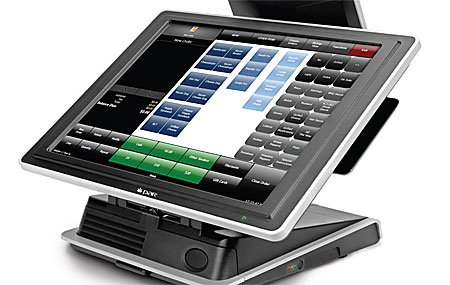
Though operators may not welcome one part, the changes that are coming to New York City restaurants October 1st will protect them from fraudulent use of credit cards in their establishments.
“On Oct. 1, 2015, in-store counterfeit fraud liability will shift to the party that has not adopted EMV chip technology – either the issuing financial institution or the merchant,” according to Paul Rubin, Sr. VP Brink Software, PAR Technology, Inc. “Understanding how this liability shift affects a business can help protect it from liability exposure,” Rubin says. “While the transition to EMV will take some time for the industry to fully roll out the hardware needed for these solutions, the benefits to both merchants and customers are undeniable!”
EMV (Europay, MasterCard, Visa) is a smart-chip technology for payment cards—EMVcards have an embedded microprocessor chip that creates a dynamic authentication code for each transaction. It can be used with a PIN or just with the cardholder’s signature. This shift is the answer to a growing number of large-scale data breaches and increasing rates of counterfeit card fraud in the U.S.
Restaurants in New York City will need to begin using the technology October 1st.
The new technology will shift liability exposure to those foodservice establishments, which do not switch over to the new standard. Explains Rubin, “A traditional magnetic stripe card (no chip) is swiped by the customer at a magnetic stripe terminal. If the purchase is a counterfeit transaction, the merchant is generally not liable, just like today. Chip cards can also be used at a traditional magnetic stripe-only terminal. If this kind of purchase is a counterfeit transaction, the merchant generally holds liability because the issuer has made the investment in chip technology to make transactions more secure while the merchant did not invest in upgrading to chip.”

If a chip card presented at a chip-enabled terminal that has been activated by the merchant is used for a purchase that is a counterfeit transaction, the merchant is not liable, and the issuer will continue to bear the responsibility of counterfeit fraudulent activity. “The really good news is that when both parties adopt chip, overall in-store counterfeit fraud is virtually eliminated due to the security benefits of chip technology,” Rubin adds.
PAR has worked with several vendors in the payment industry to enhance Brink POS for EMV. “Working with companies like VeriFone and Mercury Payments yields software and hardware solutions that merchants can deploy that accommodate MSR, EMV and mobile payments like Apple Pay,” Rubin says. One small drawback to the card is there is a slightly longer processing time than a magnetic stripe transaction.
Unlike magnetic-stripe cards, however, every time an EMV card is used for payment, the card chip creates a unique transaction code that cannot be used again, preventing hackers from using the chip information from that specific use. All this occurs through the new EMV card’s metallic square – which is the computer chip.
Magnetic stripes on traditional credit and debit cards contain static data that does not change over time until a new card with new information is given, Rubin points out. “EMV cards contain dynamic data that make in-store credit fraud much more difficult—each time a chip card is used, a new code is created and that new code is needed to complete the in-store transaction,” he says.
“This technology has already greatly reduced credit fraud in countries which have implemented EMV, so businesses who adopt this new technology sooner will be protecting their customers and their brand from hackers,” he notes.
In the store, customers will “dip” their card rather than swipe it by inserting it into a terminal slot. The machine then transmits the data from the chip. “The learning curve for consumers will be eased with machines that will walk you through the process,” he says.
Some EMV cards can also support NFC (near field communication) in which, instead of dipping or swiping, NFC-equipped cards are tapped against a terminal scanner that can pick up the card data from the embedded computer chip.
To help restaurant operators make this transition as seamlessly as possible, PAR has added support for EMV into Brink POS software and is educating its customers about what they can expect.
What if a customer has an old magnetic stripe device? “The new EMV-enabled devices, which are separate from POS registers, can accommodate both traditional magnetic swipe and EMV transactions,” Rubin says.
New EMV-ready cards are still being distributed to consumers and there will be a need for businesses to process both formats for a time. The first round of EMV cards will be equipped with both chip and mag stripe functions to give businesses time to adjust and consumer spending is not disrupted. For more information, call 800-403.9027, x1.
























